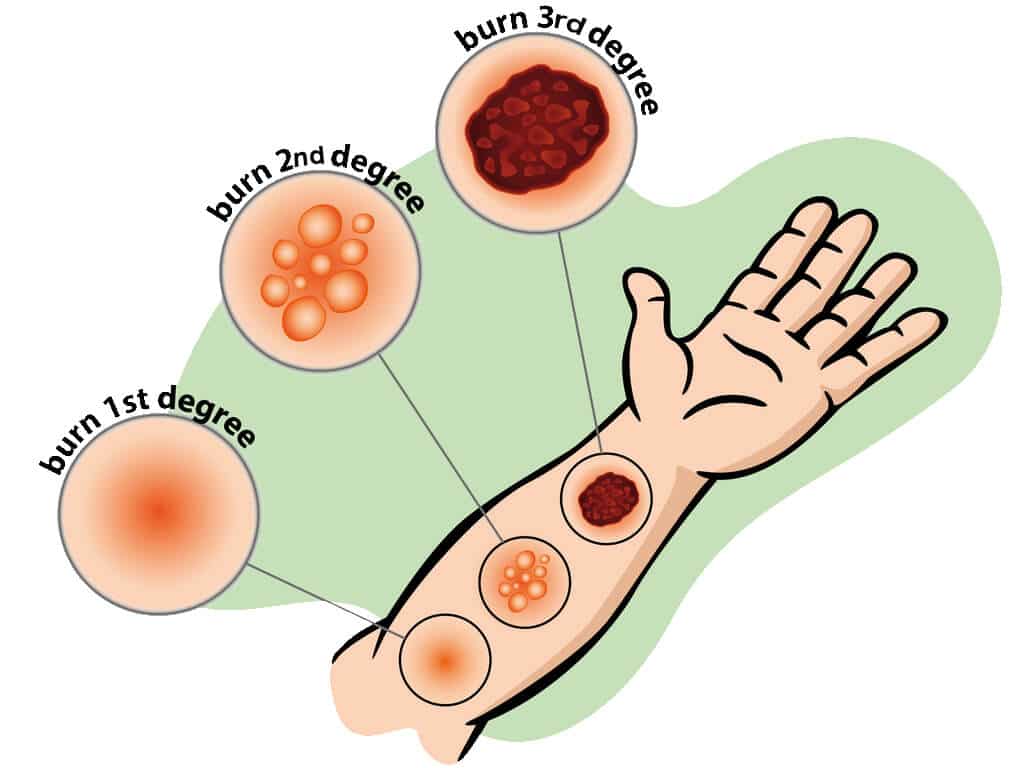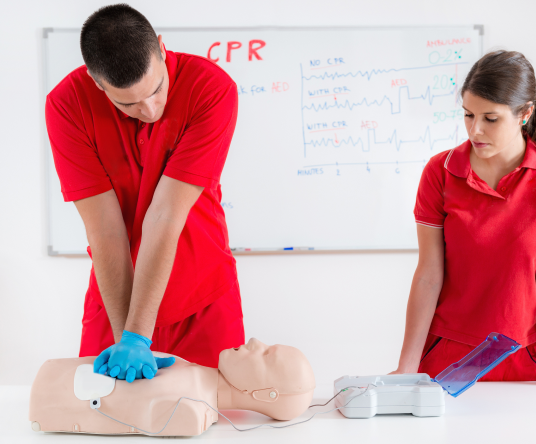Chapter 24: First Aid- Burn Emergencies
Defined:
Skin is the body’s largest organ. A burn is an injury to this organ. Burn treatments vary based on the severity of the injury.
Causes:
- Chemical burns
- Electrical burns
- Faulty appliances (i.e., space heaters)
- Fire / Flame (i.e., matches)
- Heat (i.e., hot liquid, steam)
- Kitchen accidents (i.e., hot surfaces – stoves, ovens, irons)
- Motor vehicle accidents
Signs and Symptoms:
- Blistering
- Coughing, difficulty breathing, wheezing (burned airway)
- Numbness in the skin
- Oozing fluid
- Pain
- Peeling skin
- Red, white or charred skin
- Shock
- Swelling
Common Emergency Example(s):

First Degree Burn (Superficial):
A first-degree burn affects only the uppermost or outer layer of the skin. This burn causes mild redness, swelling and pain.
Second Degree Burn (Partial Thickness):
A second degree, or partial thickness, burn affects both the upper layer of the skin and the skin underneath it. Some specific symptoms for this burn include redness, swelling, pain and blistering.
Third Degree Burn (Full Thickness):
A third degree, or full thickness, burn is the most severe and destroys the deep layers of the skin. This can lead to numb skin and white or blackened skin.
DO NOT:
- Apply ointments or any household remedies to severe burns
- Blow air or cough on the burn
- Disturb any blister or charred skin
- Give the person anything to eat or drink if the burn is severe
- Place a severe burn under ice-cold water
- Remove anything that is stuck to the burn
- Touch the burn and risk infection
- Use any kind of dressing that may stick to the burn
First Aid Actions / Treatment:
- Assess the scene and check for your safety, especially at the scene of an electrical injury. Stay clear of the person if he / she is in contact with a power source that is on.
- Get a First Aid kit and wear personal protective equipment.
- If someone is on fire, have them Stop, Drop, and Roll – cover with a wet blanket to put the fire out. Replace with a dry blanket when the fire is out.
- Activate EMS (Call 9-1-1) if the burn is severe (third-degree burn) or the scene becomes unsafe.
- Remove clothing or jewelry that is NOT stuck to the skin / burn.
- Cool all burns with cold water (not ice-cold water; don’t use ice) until the burning subsides; cover with a dry, sterile dressing.
- If necessary, in severe conditions, provide CPR. If you do not know how, give Hands-Only CPR.

